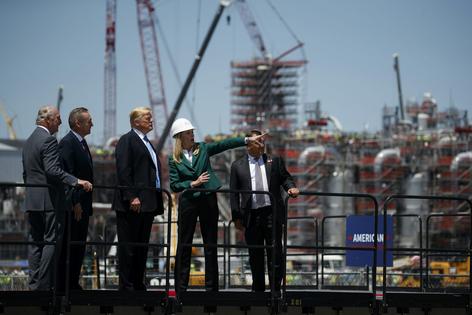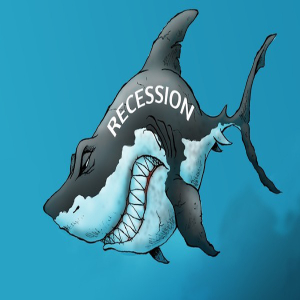What Trump can do to reverse US climate policy − and what he probably can’t change
Published in Political News
As the U.S. steels itself for another Trump administration, one area unambiguously in the incoming president’s crosshairs is climate policy.
Although he has not released an official climate agenda, Donald Trump’s playbook from his last stint in the Oval Office and his frequent complaints about clean energy offer some clues to what’s ahead.
Less than six months into his first presidency, Trump in 2017 formally announced that he was withdrawing the United States from the Paris climate accord – the 2015 international agreement signed by nearly every country as a pledge to work toward keeping rising temperatures and other impacts of climate change in check.
This time, a greater but underappreciated risk is that Trump will not stop at the Paris Agreement.
In addition to exiting the Paris Agreement again, Trump could try to withdraw the United States from the United Nations Framework Convention on Climate Change. The 1992 treaty is the foundation for international climate talks. A withdrawal from that treaty would make it nearly impossible for a future administration to reenter the UNFCCC treaty because doing so would require the consent of two-thirds of the Senate.
The reverberation of such a step would be felt around the world. While the Paris Agreement is not legally binding and is based on trust and leadership, the stance taken by the world’s largest economy affects what other countries are willing to do.
It would also hand the climate leadership mantle to China.
U.S. funding to help other countries scale up clean energy and adapt to climate change rose significantly during the Biden administration. The first U.S. International Climate Finance Plan provided US$11 billion in 2024 to help emerging and developing economies. And commitments from the U.S. International Development Finance Corporation surged to almost $14 billion in the first two years of Biden’s presidency, versus $12 billion during the four years of Trump. Biden also pledged $3 billion to the United Nations’ Green Climate Fund.
Under President Trump, all these efforts will likely be scaled back again.
In other areas, however, Trump may be less successful.
He has been vocal about rolling back clean energy policies. However, it may be harder for him to eliminate the Biden administration’s massive investments in clean energy, which are interwoven with much-needed investments in infrastructure and manufacturing in the Infrastructure Investment and Jobs Act and the Inflation Reduction Act.
Since both are laws that Congress passed, Trump would need majorities in both Houses to repeal them.
Even if Republicans end up with a trifecta – controlling both houses of Congress and the White House – repealing these laws will be challenging. That’s because the laws’ benefits are flowing heavily to red states. Trump’s allies in the oil and gas industry also benefit from the law’s tax credits for carbon capture, advanced biofuels and hydrogen.
However, while the Inflation Reduction Act may not be repealed, it will almost certainly be tweaked. The tax credit to consumers who buy electric vehicles is likely on the chopping block, as is the EPA regulation tightening tailpipe pollution standards, making battery-powered cars uneconomical for many.
Trump may also slow the work of the Department of Energy’s Loan Program Office, which has helped boost several clean energy industries. Again, this is not a surprise – he did it in the first term – except that the impact would be greater given that the office’s lending capacity has since skyrocketed to over $200 billion, thanks to the Inflation Reduction Act. So far, only about a quarter of the total has been doled out, so there is a rush to ramp up the pace before the new administration starts in January.
Trump also talks about increasing fossil fuel production, and he almost certainly will take steps to boost the industry via deregulation and opening up more federal lands for drilling. But prospects of massively ramping up oil and gas production seem dim.
The United States is already producing more crude oil than any country ever. Oil and gas companies are buying back stocks and paying dividends to shareholders at a record pace, which they wouldn’t do if they saw better investment opportunities.
The futures curve indicates lower oil prices ahead, which could be further weighed down by slowing demand from any resulting economic weakness if Trump follows through on his threat to impose tariffs on all imports, leading to the risk of lower profitability.
Trump will likely try to roll back climate policies related to fossil fuels and emissions, which are the leading source of climate change, as he did with dozens of policies in his first administration.
That includes eliminating a new federal charge for methane emissions from certain facilities – the first attempt by the U.S. government to impose a fee or tax on greenhouse gas emissions. Methane is the primary component of natural gas and a potent greenhouse gas.
Trump has also promised to support approvals of new liquefied natural gas, or LNG, export terminals, which the Biden administration tried to pause and is still working to slow down.
One clean energy source that Trump is likely to rally behind is nuclear energy.
And despite his criticism of wind and solar power, investments in renewable energy will likely continue rising because of market dynamics, especially with onshore wind and utility-scale solar projects becoming more cost effective than coal or gas.
Nevertheless, a U.S. withdrawal from the Paris Agreement and the regulatory and policy uncertainty under Trump would likely slow the pace of investments. The expected inflationary impact of his economic policies is likely to negate the benefits of lower cost of capital that were expected to flow through with central banks lowering interest rates this year. It’s an outcome that the warming planet can ill afford.
This article is republished from The Conversation, a nonprofit, independent news organization bringing you facts and trustworthy analysis to help you make sense of our complex world. It was written by: Gautam Jain, Columbia University
Read more:
The US broke global trade rules to try to fix climate change – to finish the job, it has to fix the trade system
No, America’s battery plant boom isn’t going bust – construction is on track for the biggest factories, with thousands of jobs planned
Bringing manufacturing back to the US requires political will, but success hinges on training American workers
Gautam Jain does not work for, consult, own shares in or receive funding from any company or organization that would benefit from this article, and has disclosed no relevant affiliations beyond their academic appointment.





























































Comments